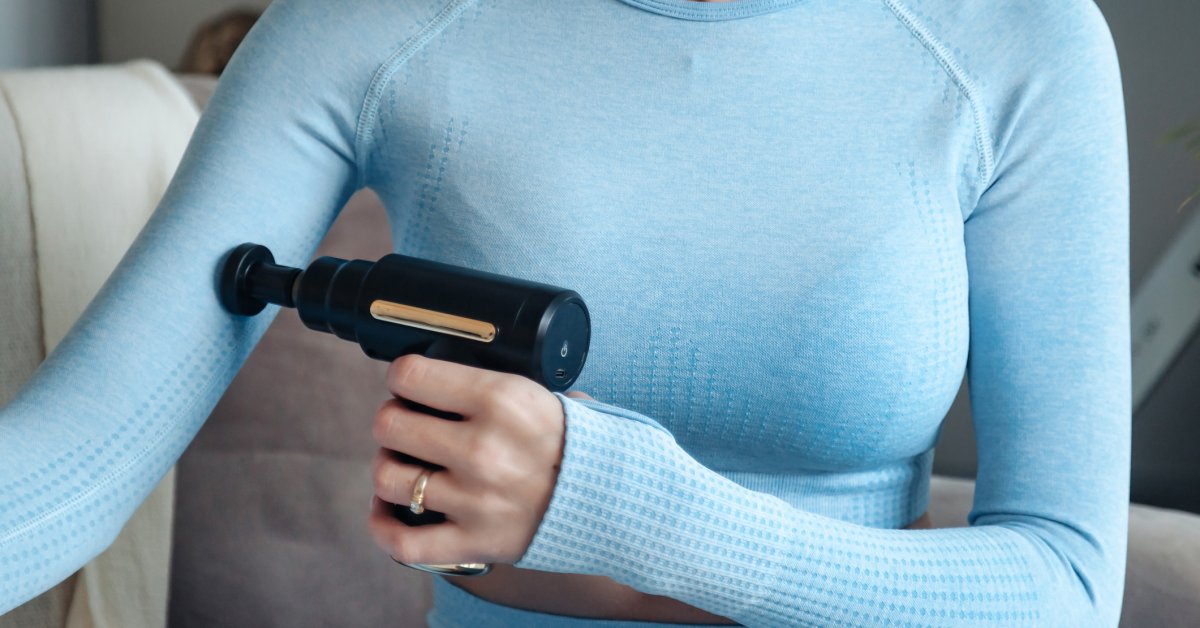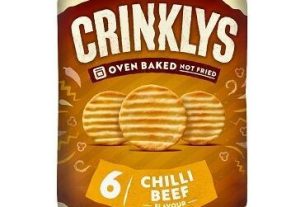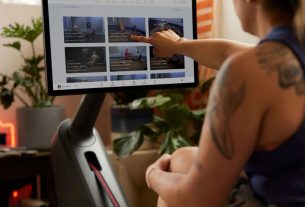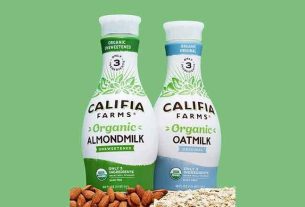In 2022, social media inspired many of the ways we tried to get and stay healthy—but not always for the better. Talk about weight-loss drugs spread like wildfire online, as did our collective agreement to stop going the extra mile at work. We turned to Dr. TikTok again and again, and focused perhaps too much on body image—even when we tried to keep things positive.
The new year is the perfect time to re-evaluate these habits, experts say. Here are nine wellness trends you’d be better off ditching in 2023—plus healthier alternatives.
Weight-loss shots
Ozempic and Wegovy, two weight-loss injections that are used to treat Type 2 diabetes and obesity, are hot commodities—even among people without those conditions. “There are people on Reddit and TikTok and other platforms hearing about it,” says Dr. Andrew Kraftson, a clinical associate professor in metabolism, endocrinology, and diabetes at Michigan Medicine. “They’re hearing people’s success stories, and those are being amplified many times over.” His patients, who meet the indications for use, tell him that their family members who don’t are asking about the injections, and seeking out doctors who will prescribe them.
These types of drugs temporarily turn down appetite, enabling people to eat less without feeling hungry. The average person loses about 15% of their total body weight within 68 weeks—but the injections are designed to be used over the long term, and those who stop using them typically gain back the weight they lost. Though the drugs are considered safe for the specific populations for which they’re intended, possible side effects include pancreatitis, changes in vision, low blood sugar, and kidney and gallbladder problems. “They’re not meant to be used willy-nilly,” Kraftson says.
For a variety of reasons, including supply-chain issues and high demand, some of these drugs are now experiencing shortages. That’s part of the reason why experts condemn vanity-fueled use. “We want the right people to be able to get these therapies,” Kraftson says. “It has been a very frustrating time for many of my patients.”
Those hoping to lose weight ought to stick to the basics, says Dr. Stephen Kopecky, a cardiologist at the Mayo Clinic in Rochester, Minn. That means emphasizing fruits, vegetables, lean protein, and whole grains. “I tell my patients that diet should be like a marriage,” he says. “It needs to be sustainable.”
Quiet quitting
The conversation about quiet quitting got loud in 2022. This now-ubiquitous term refers to doing the bare minimum at work, rather than going above and beyond.
Setting work-life boundaries is always a good idea, says Susan Albers, a clinical psychologist at the Cleveland Clinic. But she worries that quiet quitting “normalizes staying stuck in a job that doesn’t feel satisfying or suit you.” Doing so elevates the risk of burnout, stress, and anxiety.
Instead, in 2023, think about what kind of job might be more energizing: “Really take the time to look into yourself and your skills, your talents, your passion, and think about whether there’s a better match,” Albers advises. We spend so much time at work that it’s worth the effort to figure out what might make us happiest.
More from TIME
Diagnosing yourself on TikTok
TikTok users are bombarded with mental-health content. Videos about ADHD have collected more than 2 billion views, and the #borderlinepersonalitydisorder hashtag has 190 million. Clips tagged #autism hover around 15 billion views. Mental-health professionals say it’s now common for the people thumbing through these posts—often teens—to diagnose themselves with whatever condition resonates the most.
“We see a lot of misinformation being spread, while high-quality content tends to perform poorly,” says Kate Kowalczik, a therapist who practices in New York and California. “Combine that with difficulty accessing mental-health care in the U.S., and it’s a recipe for self-diagnosis.”
Read More: For Some Women With ADHD, TikTok Is the First Place They Felt Heard
People often use TikTok to find language to describe an experience they’re having but didn’t previously know how to express, Kowalczik says. While this can foster feelings of support and validation, self-diagnoses based on information shared by unqualified content creators won’t always be accurate. There might be “something else that better explains what they’re experiencing, and it isn’t necessarily what the TikTok algorithm brought them to.”
Kowalczik challenges TikTokers to double-check mental-health information with a credible source, and discuss their symptoms with a doctor or other mental-health provider who can put them into context and help figure out a proper diagnosis.
Overdoing melatonin
Americans are getting less sleep than they did before the pandemic. Perhaps as a result, melatonin use has steadily increased—and now, doctors say we might be relying too heavily on the over-the-counter sleep aid.
That’s worrisome for a variety of reasons, including a lack of data on the long-term safety of regular use and the fact that the supplement isn’t regulated by the U.S. Food and Drug Administration. Plus, research published in 2022 indicates that melatonin overdoses among kids increased by 530% from Jan. 2012 to Dec. 2021, escalating during the pandemic. In Sept., the American Academy of Sleep Medicine issued a health advisory imploring parents to talk to a doctor before giving their kids melatonin.
It’s time for a shift in how we think about melatonin, Kopecky says. “People think it replaces their bad sleep hygiene,” he says—it can become a handy crutch for counteracting late nights spent scrolling. “But a pill doesn’t replace a lifestyle.”
Kopecky suggests reserving melatonin for special occasions, like if you’ve traveled to a different time zone and need help adjusting to a new schedule. It’s also important to practice the sleep habits that were a good idea last year, and the year before, and that still will be next year: Stick to a consistent bedtime, dim your lights (because bright lights can interfere with your body’s natural production of melatonin), and go device-free for about an hour before you want to fall asleep.
Toxic body positivity
The body-positivity movement aims to accept, appreciate, and celebrate all bodies, regardless of size, shape, or ability. But increasingly, critics say the push for body positivity has turned toxic. It “places the burden on those with more marginalized bodies to simply love themselves irrespective of the very real, systemic forces that promote negative body image,” says Saba Harouni Lurie, a therapist based in Los Angeles. “At its core, body positivity still reinforces the notion that there’s value in the way a person’s body looks.” It’s not realistic for everyone to love their body all the time, she adds—and under this framework, failing to do so can lead to feelings of guilt and shame.
Instead, in 2023, aim to practice body neutrality, she suggests. That means accepting our bodies as vessels that allow us to go for a run or walk to the mailbox, instead of attaching positive or negative feelings to them. Start by unfollowing social media accounts that promote unhealthy body-image ideals, Albers says. Then, switch up your self-talk. “Instead of saying things like ‘I love my body,’ shift to ‘I accept my body as it is. I appreciate what it does for me,’” she says.
‘What I eat in a day’ videos
An omelet, blueberries, and an organic espresso shot for breakfast. Grass-fed beef jerky sticks, followed by gluten-free brown rice noodles. Wild salmon, a baked sweet potato, and so on.
Welcome to the 15-second highlight reel of what some wellness influencer ate over the course of a day. Such videos have been viewed more than 14 billion times on TikTok—and experts say they could promote unrealistic expectations and an unhealthy body image.
“Most times, the people posting these videos have a small body size, are attractive, and covertly imply that if you eat what they eat, you’ll feel better, manage your symptoms, and achieve the results you want,” says Emily Tills, a registered dietitian nutritionist based in New York. But that would suggest a cookie-cutter approach to nutrition—which doesn’t work. “No one has the same genes as you, no one processes food the same exact way you do, and no one has the same dieting history,” all of which impact how your body reacts to certain foods.
Plus, Tills points out, most of the people posting “what I eat in a day” videos omit some of what they consume, particularly the less nutritious choices. “They aren’t broadcasting that they may have an eating disorder, or that they can fixate on some of the foods they tend to avoid,” she says. “Following what someone else eats in a day is rejecting the trust that our body will help guide us to eat what it needs.” Next time you see one of these videos, Tills says, just keep scrolling.
At-home IV therapy
During a much-discussed scene of The Kardashians in May, Kendall Jenner and Hailey Bieber lounged on couches while hooked up to IVs pumping vitamins into their bloodstreams. Specifically, they said, they were receiving nicotinamide adenine dinucleotide, or NAD, a coenzyme touted as a way to stimulate cell regeneration and generate energy. “I’m going to NAD for the rest of my life and I’m never going to age,” Bieber quipped.
IV drip therapy flourished in 2022, even among non-celebrities: Stations popped up at big musical festivals, and many companies began making house calls. These drips, which typically cost a few hundred dollars per 30- to 60-minute session, promise to deliver hangover recovery, mental clarity, dewy skin, and boundless energy, among other benefits. One IV treatment designed for an upset stomach, for example, includes a blend of fluids, B vitamins, Pepcid, and the anti-nausea medication Zofran.
“You couldn’t pay me enough to have that done,” says Dr. Jen Gunter, an obstetrician and gynecologist in San Francisco. Among the biggest problems with such treatments: a lack of regulation. “You could be getting a toxic or potentially harmful dose. Who knows what these people who are mixing the stuff up are giving you?” Plus, there’s no data indicating they’re healthy or necessary for the average person, and large quantities of fat-soluble vitamins can be dangerous. Gunter’s advice? In 2023, skip the drip.
Immune-boosting products
Since the start of the pandemic, so-called immune-boosting products like hydration powder and gummies have been in high demand. It makes sense that as nasty viruses continue to circulate, anything that might help us protect ourselves becomes appealing.
But these products aren’t the key to staying healthy. “You can’t boost your immune system,” Gunter says. “You wouldn’t even want to do that”—having too much of an immune response can cause the immune system to go haywire.
The best thing any of us can do to fend off germs, Gunter says, is to follow a healthy diet that emphasizes vegetables and fiber, with low amounts of saturated fat. Get enough exercise, quit smoking, and manage chronic diseases like diabetes and high blood pressure. Wearing a face mask is also an effective way to prevent respiratory viruses. “None of it’s the ‘sexy’ Instagram herbal stuff,” she says. Save your money for more fun—and effective—pursuits.
Massage guns for fitness recovery
“Massage guns were all the rage in 2022,” says Travis Pollen, an assistant professor of exercise science at Thomas Jefferson University. These small devices pummel your muscles, ostensibly softening and smoothing stiff tissues and relieving soreness. While they might feel good—“albeit a little masochistic,” he says—they’re not the best way to aid post-workout recovery.
Pollen likens massage guns to slapping tape on a cylinder of water with a massive leak. “It’s a relatively weak antidote to the cascade that is intense exercise,” he says.
So what are better ways to recover from a challenging workout? “The boring ones, of course,” Pollen says. “Sleep, relaxation, nutrition, and hydration.” And, of course, appropriately managing the intensity of your exercise routine.
More Must-Reads From TIME



